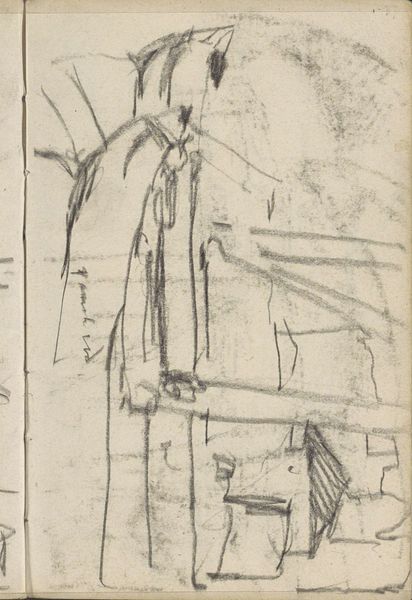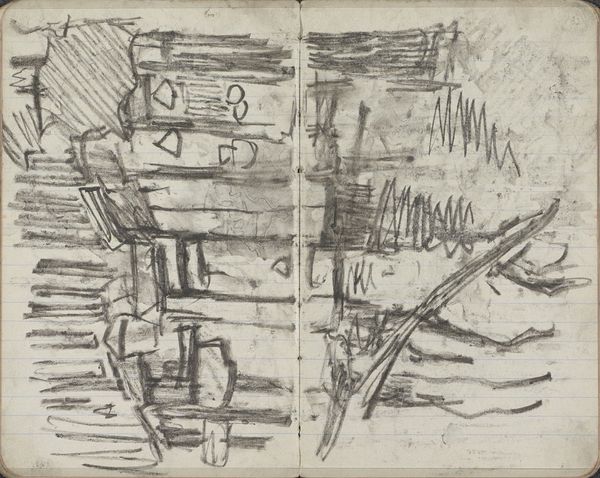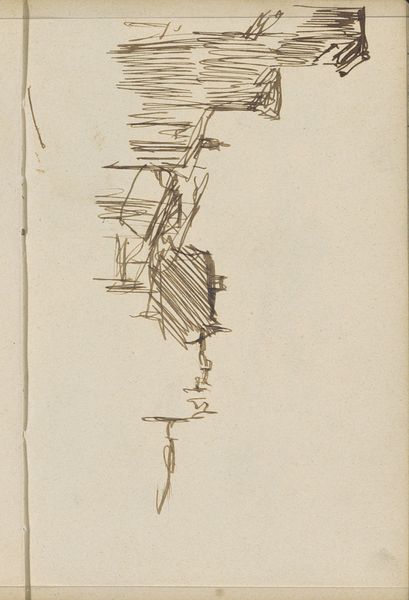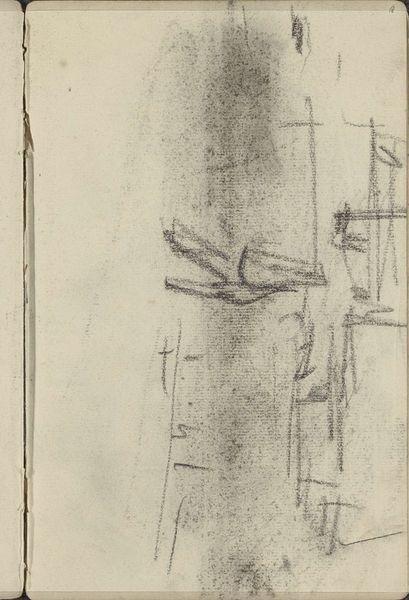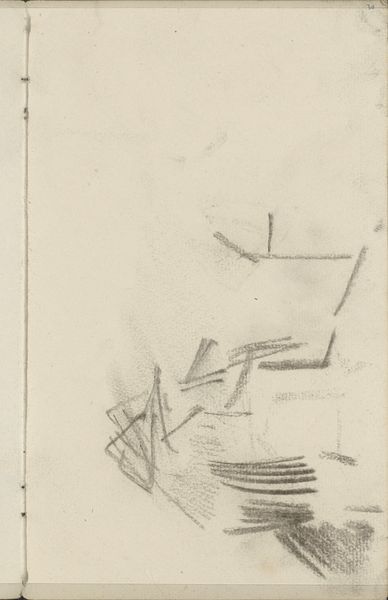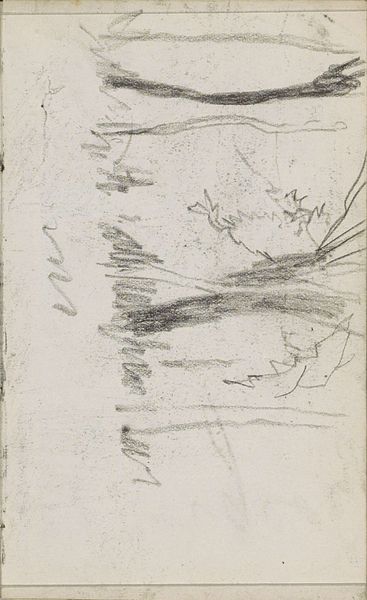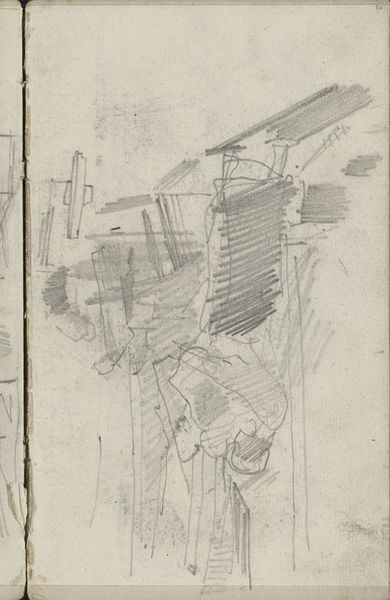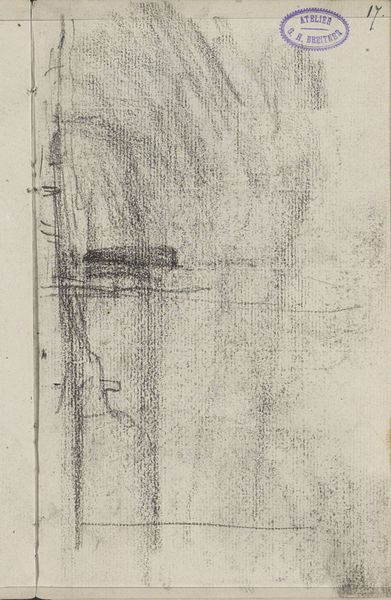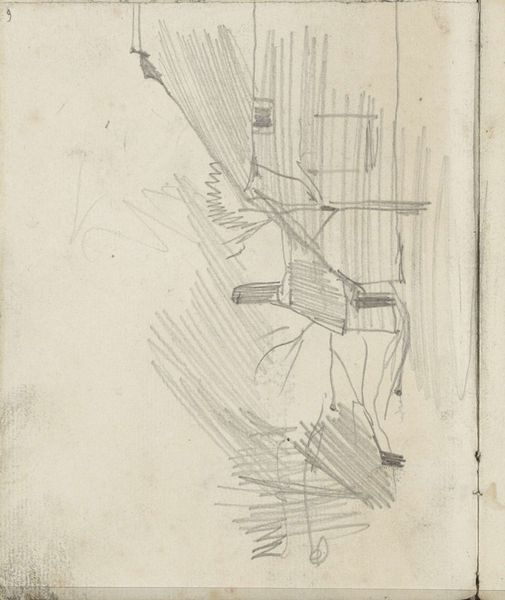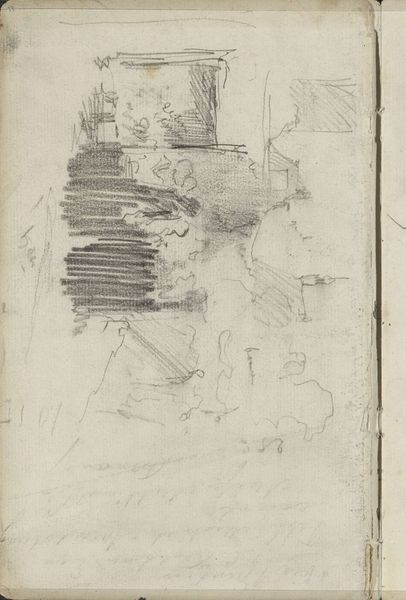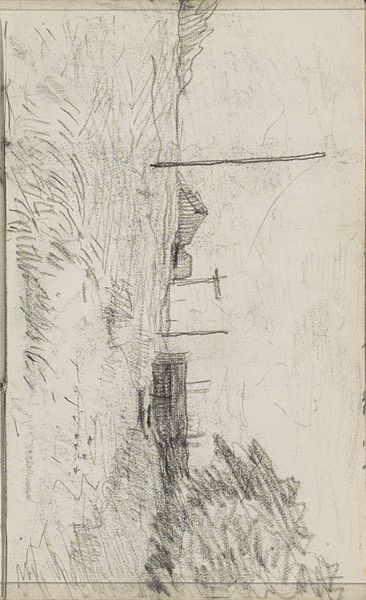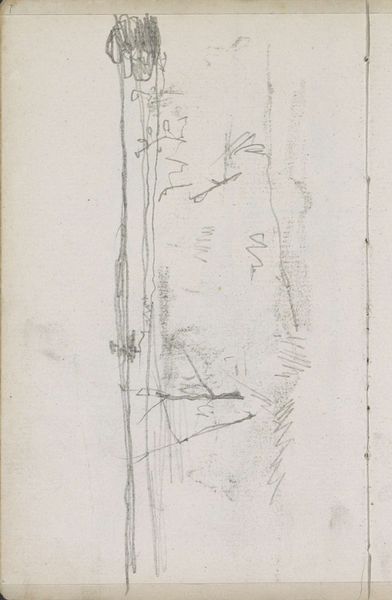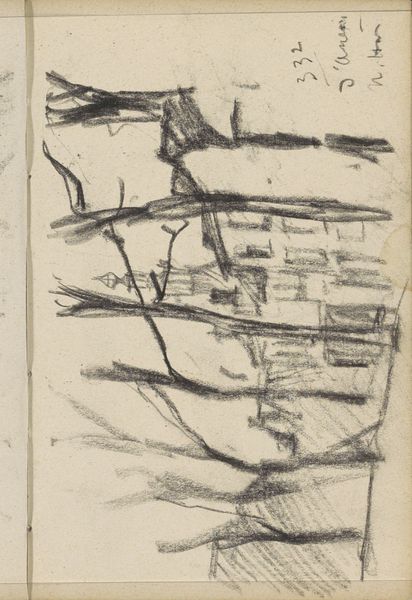
Copyright: Rijks Museum: Open Domain
Curator: Looking at this George Hendrik Breitner sketch from between 1880 and 1906, titled "Landschap met boerderij," my initial impression is a raw, almost desolate landscape captured with striking brevity. Editor: Yes, there’s an immediate sense of sparseness, wouldn’t you say? The stark lines suggest a kind of isolation, a detachment perhaps emblematic of Breitner's complex relationship with his subjects and society in general. One senses here a modern anxiety in rudimentary tones. Curator: I’d agree, but I'm struck more by the materiality and the making of it. You see, the visible pencil and charcoal strokes emphasize the artistic process itself, focusing on the raw, unfiltered representation of labor within a pastoral context, while he plays with ideas of land use. It shows the labor, both rural, and of the artist making the sketch. Editor: An interesting reading. I find it is a window into the social fabric of the time. The sketched farmhouse seems to reflect the growing divide between rural life and the burgeoning urban landscape. One might read it as a commentary on displacement, where rapid industrialization encroached on traditional agrarian societies and traditional understandings of labor. Curator: That's a strong point about urbanization affecting society in that era. Looking at how the composition favors geometric shapes, particularly within the structure of the farm, it is indicative of modernity disrupting previously rural societies. Breitner here challenges previous rural-idyll painting of earlier years. Editor: Considering Breitner's involvement with Amsterdam Impressionism and his concern with societal changes and photographic techniques, seeing the world shifting in relation to human labor and industrialization makes so much sense. How do you see the piece engaging contemporary viewers? Curator: I believe the sketch, while depicting what seems like an ordinary farmland scene, encapsulates an understanding of shifting society for Breitner and asks a question on human relationship with material use for the current day gallery observer. The starkness can incite introspection on industrialization and resource management. Editor: For me, its beauty lies in how it bridges those temporal gaps. "Landschap met boerderij" serves as a critical document that connects social changes, human activity, and industrial transformations across time. Curator: Yes, there’s a lasting resonance there. A succinct encapsulation of a past grappling with transitions—resonating still.
Comments
No comments
Be the first to comment and join the conversation on the ultimate creative platform.
